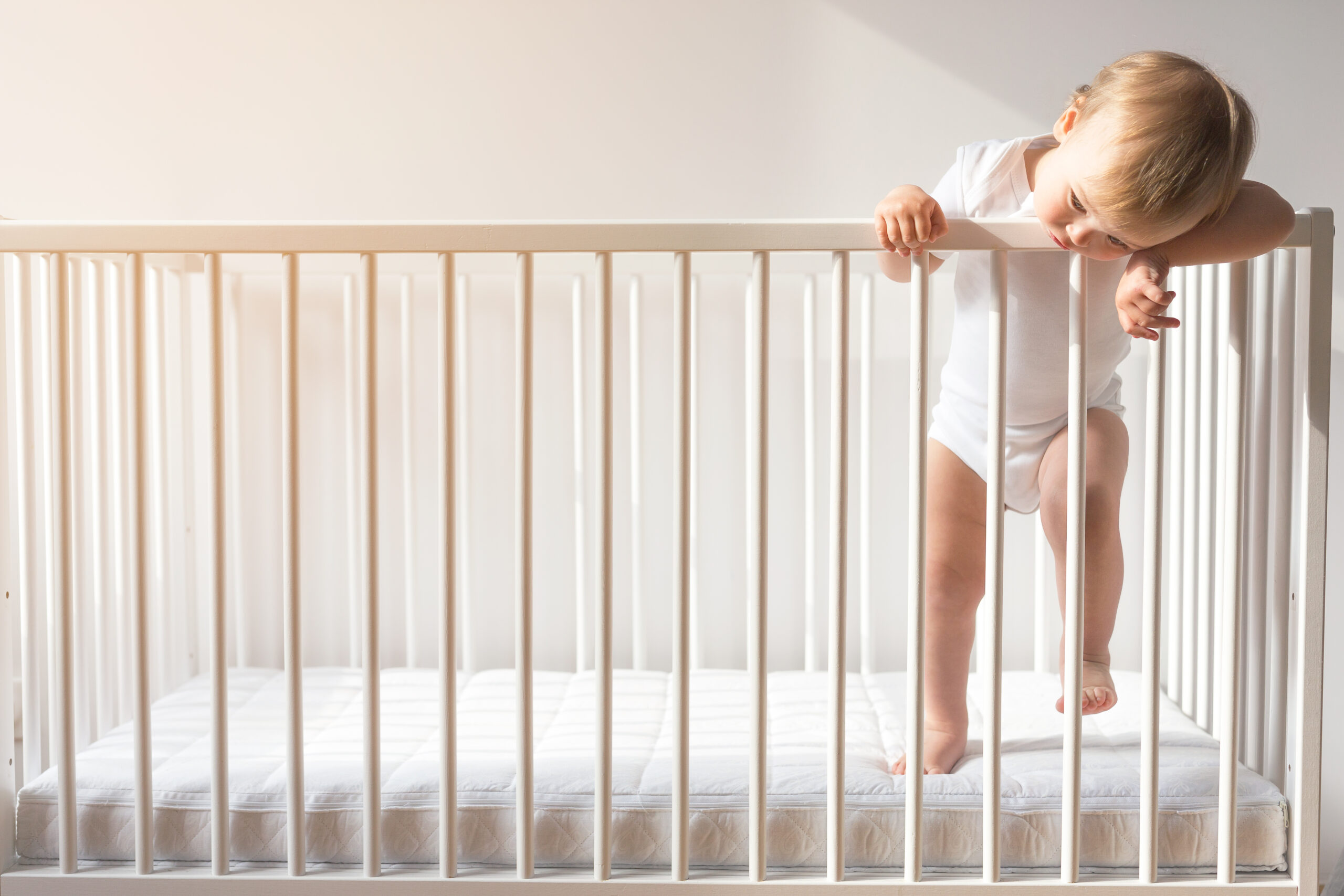Do you find nap transitions confusing? You are not alone! It can be overwhelming to figure out the right time and how to do it. Today we are going to discuss when you can expect nap transitions! Next week, we’ll talk about HOW to drop a nap. If you are struggling with short naps, be sure to check out my 6 tips to solve short naps.

What is a nap transition?
A nap transition is simply when your baby drops a nap. As your child grows, they will require more awake time to build up enough sleep pressure. fortheir next sleep. The most common nap transitions talked about are the 3 to 2, 2 to 1 and 1 to no naps!
Through that first year of life, it can seem like as soon as you get settled into a routine and comfortable with it- things change. Nap transitions can lead to some anxity for parents, we are afraid to change what was working! BUT nap transitions are a natural part of our children’s growth and development. By honouring your child’s potential need for a nap transition you can actually improve their sleep.
At what age will my baby or toddler be ready for a nap transition?
It is difficult to pinpoint the exact age at which your baby or toddler will drop a nap. Each baby develops at their own speed and follows their own unique sleep journey. There are many factors that will contribute to when they are ready to transition.
With that said, there are common age groups when we tend to see babies transition. The transition from 3 to 2 naps most commonly occurs between 6-7 months, the transition from 2 to 1 nap most commonly occurs between 12-18 months, and finally the transition from 1 to no nap most commonly occurs between 2.5-4 years.
How will I know my baby, toddler or child is ready to drop a nap?
Common signs to look for with the 3 to 2 nap transition:
– The PM nap decreases in length
– Fighting/resisting the PM nap
– Stamina is improving, longer periods of crying in crib for sleep
– Early mornings
– Night wakings
Common signs to look for with the 2 to 1 nap transition:
– Morning nap is very long
– Shorter PM nap or just playing in the crib (only to fall asleep late then interfere with bedtime)
– Taking >20 mins for your child to fall asleep
– Early mornings
– Night wakings
Common signs that it is the end of naptime:
– Bedtime becomes a problem and is getting very late
– Fighting/resisting the nap
– Early mornings/increased night wakings
If demonstrating signs for >2 weeks and they are within the appropriate age group to drop a nap, then it is time to drop.
**For all nap transitions: Body clock takes 4-6 weeks to adjust in change of patterns. Be patient. It is okay to move bedtime up earlier during transitions.
Remember developmental milestones may lead to similar disruptions in sleep, so make sure it is time for a nap transition by waiting 1-2 weeks before making that call.
Not sure HOW to drop a nap? Stay tuned for next week’s blog! Should you need support right away, book a free call with me so we can discuss how I could support you and your family to reach your sleep goals!
Rosalie Kassen (She/her)
Founder of Plume Sleep Solutions, RN and Paediatric Sleep Consultant.
Working with families all over the world to bring healthy sleep habits and rest back into their homes. Stop surviving and start thriving!
